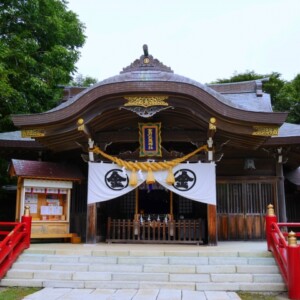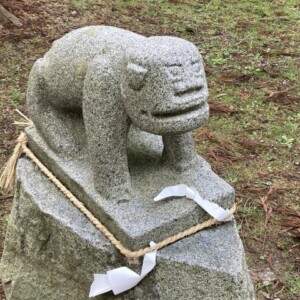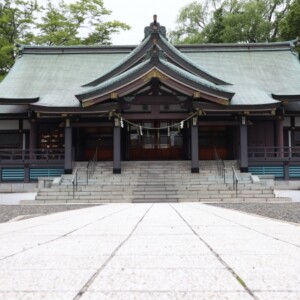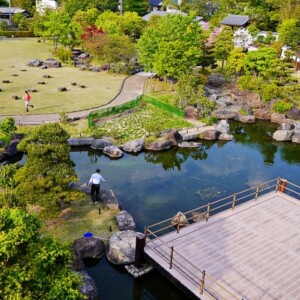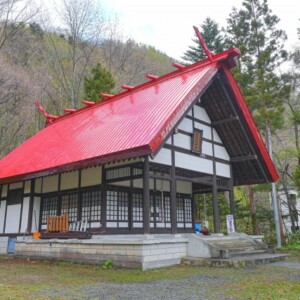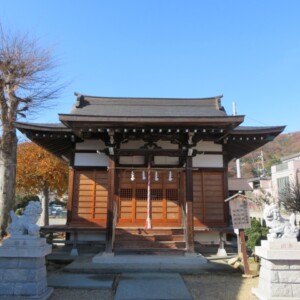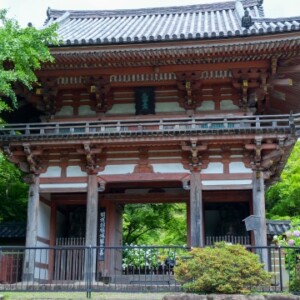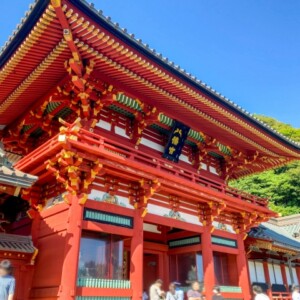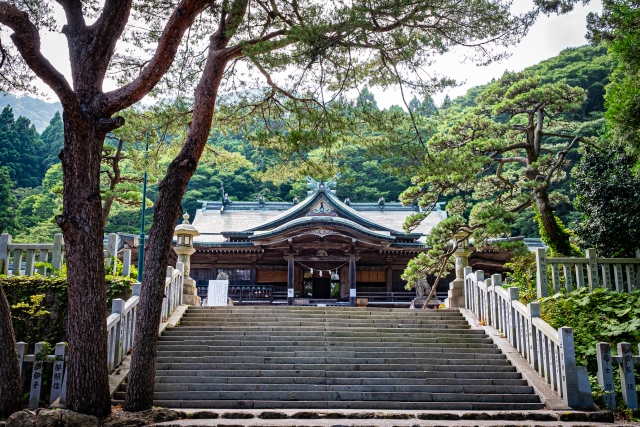
Hakodate Hachimangu Shrine|Complete guide to the history, highlights, and worship information of this historic shrine
Hakodate Hachimangu Shrine, located at the lush foot of Mount Hakodate, is one of the most historic shrines in Hokkaido, dating back to the Muromachi Period. Known to the public by the nickname “Hachiman-san,” the shrine is known for its dignified main hall built in the Seitei-Hachimon-zukuri style and its 134 stone steps. Many visitors come to seek blessings for maritime safety and prosperous business, and Hakodate’s representative power spot is introduced here.
Outline and Basic Information on Hakodate Hachimangu Shrine
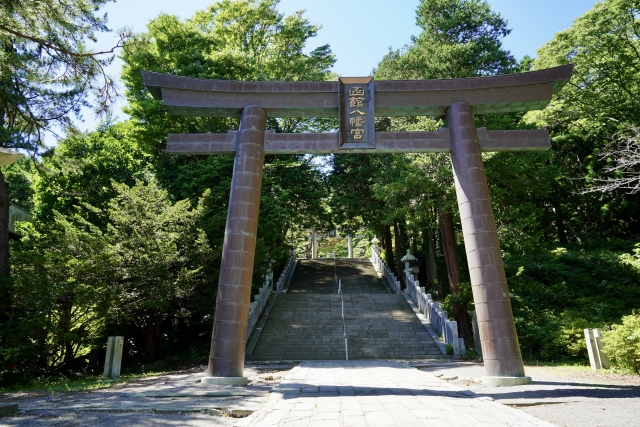
Hakodate Hachimangu Shrine is a historic shrine located at the southeastern foot of Mount Hakodate and currently holds a prestigious status as an attached shrine of the Jinja Honcho. The shrine plays an important role in protecting the entire city of Hakodate and has been deeply involved in the history of Hokkaido’s development. The shrine grounds offer a panoramic view of Hakodate city and the Tsugaru Straits, and the sacred space surrounded by nature purifies the hearts of worshippers.
History and Origin
Hakodate Hachiman Shrine dates back to 1445, when Masamichi Kono, then lord of Kameda County, built a castle in Motomachi, Hakodate, and invited Hachiman Shrine to the southeast corner of the castle area as the castle’s guardian deity. The pavilion was called “Hakodate” because of its box-shaped structure, which is said to have given rise to the name of the area, Hakodate.
The subsequent history of Hakodate is rich in transition. In 1512, the Kono clan was attacked by Emishi and forced to flee to Akagawa-mura, Kameda-gun (present Akagawa-machi, Hakodate City), where they worshipped the Hachiman God. In 1649, a priestess of the Kono clan, Ichime (also known as Ichiko), moved the Hachiman Shrine to the site of the former Kohnokan in Motomachi, in response to a divine command.
The Edo period marked an important turning point. In 1799, the Edo Shogunate made the East Ezo region under the direct jurisdiction of the Shogunate and established the Hakodate Magistrate’s Office at the shrine site, so in 1804, the shrine was relocated to Aisho-cho (now northeast of Motomachi, Hakodate) at the expense of the Shogunate.
The shrine was moved to its current location in 1880, and the current building was constructed in 1915. Designed by Tokizo Ando, who also designed the Meiji Shrine, it is highly regarded as a masterpiece of Taisho period shrine architecture.
Deities and Benefits
Hakodate Hachimangu Shrine is dedicated to Hondawake no Mikoto, Sumiyoshi no Okami, and Kotohira no Okami.
The main deity, Hindawake-no-Mikoto, is the spirit of the 15th Emperor Ojin, and has long been worshipped as the guardian deity of the samurai family as the Hachiman God. Today, the shrine is well known as a deity that brings blessings to all aspects of daily life.
Sumiyoshi-no-okami is known as the god of the sea, presiding over the safety of navigation and protection of maritime traffic. As a deity appropriate for the port city of Hakodate, he is revered by those involved in the fishing industry and maritime industry.
Konpira-daijin is worshipped as the god of prosperity and financial fortune, and has watched over the development of Hakodate’s business and industry.
The deity is believed to bring safety at sea, good fortune, and prosperous business. In addition, the deity is believed to offer blessings in all aspects of life, such as protection from bad luck, safety in the home, academic achievement, and matchmaking.
Hakodate Hachimangu Shrine Highlights
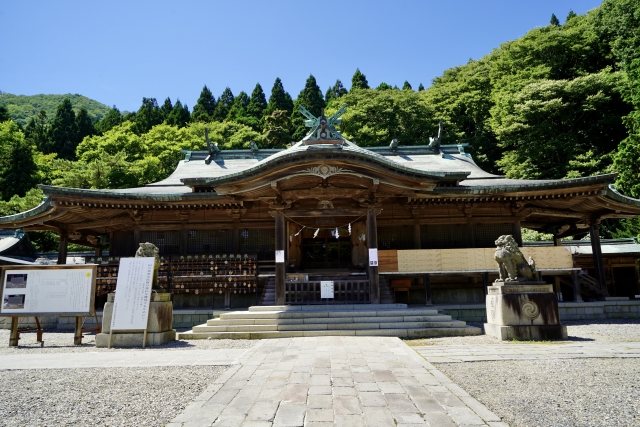
The attraction of Hakodate Hachimangu Shrine lies in the solemn harmony between the buildings of high historical value and the rich natural surroundings of Mount Hakodate. Beginning with the long stone steps that welcome visitors to the shrine, the shrine grounds are dotted with many attractions.
Architectural and Structural Attractions
The majestic appearance of the Shotei-hachiman-zukuri style is a combination of the Seitei-zukuri style (a form of the Fujiwara-era shinden-zukuri with one rear room cut out) and the hachimon-zukuri style (the main hall and worship hall are connected by a central hall). This architectural style is known as a masterpiece of Taisho era shrine architecture.
Whether viewed from the front or from the side, the gently curving, overlapping, imposing roof structure is magnificent. The combined structure of the main hall, the hall of offerings, and the hall of worship is both majestic and beautiful, and leaves a deep impression on visitors to the shrine.
The main shrine building (“Seitei-Hachimono-Zukuri,” Taisho 4) and the large portable shrine (“Hakodate City Designated Cultural Property”) (“Hakkako-Zukuri,” Meiji 27) have also been preserved as important cultural properties. The portable shrine is a gorgeous gold-leafed structure, and is used in the “O-mikoshi Kake-nobori ritual,” a 134-step stone staircase climb during the annual festival.
The building materials and decorations of the shrine pavilions are also noteworthy. While using timber from Hokkaido, the building skillfully incorporates traditional shrine building techniques from Honshu, symbolizing the fusion of cultures from Hokkaido and Honshu.
Nature and Scenic Beauty
Against the green backdrop of Mt. Hakodate, the shrine is filled with a divine “chi” (spirit). Surrounded by the trees of Mt. Hakodate, the shrine grounds offer visitors the opportunity to enjoy the beauty of nature in each season.
In spring, cherry blossoms are in full bloom, and the rows of cherry trees along the back approach to the shrine are especially well known as a hidden gem. Cherry trees are planted along this back approach and bloom around Golden Week every year. During the cherry blossom season, visitors can admire the beautiful flowers as they walk up the stone steps, making their visit to the shrine an even more special experience.
In summer, visitors can feel cool in the lush greenery of the temple grounds, and in autumn, the autumn leaves color the grounds. In winter, the sacred atmosphere is enhanced by the snowy landscape.
The view from the grounds of the shrine is also magnificent, and as a scenic spot overlooking the Tsugaru Straits, visitors can enjoy a panoramic view of the city of Hakodate and the beautiful scenery of the Tsugaru Straits. The view at sunset is especially exceptional, and many worshippers visit the shrine peacefully while enjoying the scenery.
Places of interest and photo spots in the precincts of the shrine
In addition to the main shrine, there are many other places of interest within the grounds of the shrine. In a corner of the calm atmosphere of Hakodate Hachimangu Shrine is Tsuruwaka Inari Shrine, with its bright vermilion torii gate and shrine pavilions. This Inari Shrine catches the visitor’s eye with its beautiful vermilion color, which contrasts sharply with the main shrine pavilion.
The folded paper cranes, with their wishes for the eradication of evil plagues and peace, are tastefully decorated. The sight of the paper cranes decorated with wishes for peace makes it a beautiful photo spot and a popular destination for visitors.
The Sagatama Pond on the grounds of Hakodate Hachimangu Shrine is a habitat for the endangered Ezo toad (Bufo japonicus). The pond is important from the standpoint of nature conservation, and visitors can get a taste of this precious ecosystem through quiet observation.
The 134 stone steps of the approach to the shrine are also symbolic of Hakodate Hachimangu Shrine. Climbing these stone steps purifies the body and mind and increases the desire to worship. Looking back from halfway up the stone steps, visitors can enjoy a beautiful view of the Hakodate cityscape as well as a sense of accomplishment upon completing the climb.
Please enter “2” to continue and we will make up the rest of the section.
Guide to Prayer and Worship
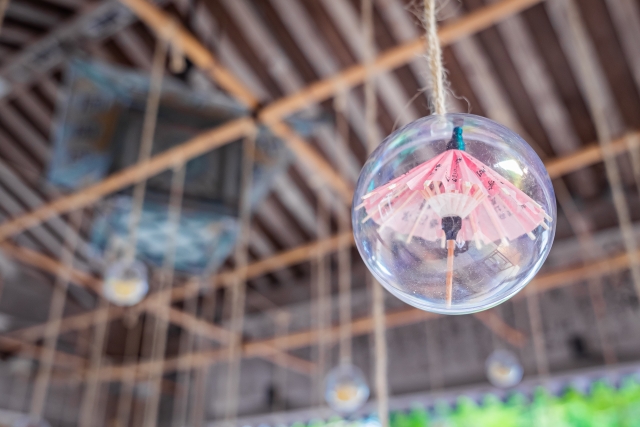
Visiting Hakodate Hachimangu Shrine, visitors can receive deeper blessings if they follow the proper etiquette and attitude. As a shrine that has long been loved by the local people, Hakodate Hachimangu Shrine warmly welcomes all visitors while respecting traditional ways of worship.
Methods and Manners of Worship
The basic manners of worship at shrines begin with bowing before passing through the torii gate. Walk down the approach to the shrine, avoiding the center of the path, and purify your body and mind at the hand-watering basin before proceeding to the hall of worship. The ceremony of hand-watering begins with holding the ladle with the right hand and washing the left hand, then holding the ladle with the left hand and washing the right hand, and again holding the ladle with the right hand and receiving water in the left hand to rinse the mouth.
The basic principle of worshipping at the shrine is “ni-ai ni clap-toe ippai” (two acts of worship, two beats, one act of worship). First, pay money, ring the bell if there is one, then bow deeply twice, clap your hands twice in front of your chest, and finally bow deeply once. When making a request, first express gratitude, then chant a specific and positive wish in your mind.
There are no special rules on what to wear when visiting the shrine, but please be sure to dress in a clean and sober manner appropriate for a sacred place. It is good manners to remove hats and sunglasses in front of the shrine. Photography is generally permitted within the shrine grounds, but please be considerate not to disturb other worshippers and use flash in a moderate manner.
Annual and Seasonal Events
The annual festival is held on August 15, and the rituals are held for three days before and after the festival. After the regular festival, a portable shrine procession is held every other year, and the procession rises up 134 stone steps along the approach to the shrine as it makes its way around the city. The portable shrine parade is a popular event that attracts many spectators as a summer tradition in Hakodate.
Another highlight of the event is the famous 134 stone steps where Dosanko horses and riders in traditional Japanese dress mount the 134 stone steps to the shrine. This cavalcade is a unique ritual unique to Hokkaido that is attracting a lot of attention.
During the cherry blossom season in spring, the cherry trees on the shrine grounds bloom beautifully, and visitors can enjoy viewing the cherry blossoms as they visit the shrine. In particular, the rows of cherry trees along the back approach to the shrine are loved by the locals as a hidden gem.
Hatsumode is the busiest time of year for Hakodate Hachimangu Shrine, attracting the largest number of visitors in the city. The shrine grounds are filled with energy as many citizens and tourists visit the shrine to offer their wishes for the New Year.
There are also seasonal prayers and special rituals, and we recommend that you contact the shrine in advance for the detailed schedule.
Red Seal and Good Luck Charm Information
Visitors can receive a red seal to commemorate their visit to the shrine. Original red seal impression books are available in two types: one with a cloth cover (with a pattern of Hachimangu Shrine on the front and a night view of Hakodate on the back) and the other with a wooden cover (2,000 yen each). The red seal book with its unique Hakodate design is popular as a souvenir of your trip.
Two types of red seals, one for Hakodate Hachimangu Shrine and the other for Tsuruwaka Inari Shrine, are available. The red seal for the Tsuruwaka Inari Shrine can also be obtained at the Hakodate Hachimangu Shrine office, and both are written in a beautiful font.
A wide variety of amulets are available for various benefits, including maritime safety, business prosperity, academic achievement, match-making, and protection from bad luck. In particular, the maritime safety amulet, which is typical of the port city of Hakodate, is popular among maritime professionals and fishermen.
In addition, “Hakodate Hachimangu Shrine Special Miso Walnut Rice Cake” is sold at the shrine office. Kibidango, a famous confectionery popular as a Hakodate souvenir, is manufactured by Tengudo Hofunsha. It comes in the same bag as the amulet. The savory taste of miso and walnuts is addictive. 130 yen per piece.
Gaman Udon (udon noodles) are also available on the temple grounds for visitors to fill their stomachs and take a breather between visits to the shrine.
Access & Visitor Information
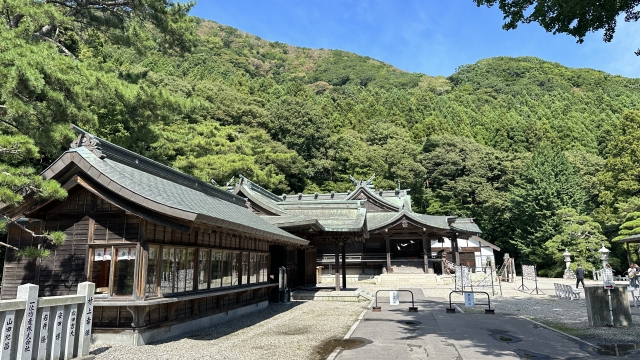
Hakodate Hachimangu Shrine is located within easy access of Hakodate and is easily visited by public transportation or by car. It is possible to visit the shrine in combination with other Hakodate sightseeing spots.
Transportation Access
Hakodate City Tram: The most convenient way to get to the shrine is to take the tram from Hakodate Ekimae Station to Yajigashira Station (15 minutes) and walk 8 minutes. The Hakodate tram is an easy means of transportation for tourists, and Yajigashira Station is the last stop on the two lines.
Hakodate Hachimangu Shrine is a 7-8 minute walk from the Yajigashira stop, the last stop on the streetcar (line 2). Walk up the long flight of stairs to the shrine. The walk from the station to the shrine is a gentle uphill slope, and there are signs along the way so you will not get lost.
The shrine is also accessible by bus, using Hakodate bus lines. The most direct route from Hakodate Station or Hakodate Airport is by streetcar.
If coming by car, it takes approximately 20 minutes from Hakodate Station. The location is relatively short distance from other tourist attractions such as Mount Hakodate and Goryokaku, making it easy to incorporate into your sightseeing route.
When taking a cab, telling the driver “Hakodate Hachimangu Shrine” is sufficient to get the driver to understand that this is a famous shrine. It is about a 15-minute cab ride from Hakodate Station.
<Address> 2-5 Yajigashira-cho, Hakodate City, Hokkaido 040-0046, Japan
Hours of Operation, Fees, and Parking
Hours of operation: 9:00-17:00, during which time you may visit the shrine freely. However, the granting of red seals and amulets is limited to the hours when the shrine office is open, so we recommend that you visit during business hours if you want to be sure of receiving a red seal.
There is no charge for visiting the shrine, and anyone is welcome to come and pay a visit. The initial fee for a red seal generally ranges from 300 to 500 yen, and the price of the amulet varies depending on the type.
Parking: Parking is available and free of charge for visitors. There are two parking lots, one at the bottom of the stone steps and the other near the shrine pavilion. Visitors with limited mobility or the elderly are recommended to use the parking lot near the shrine pavilion.
The parking lot can accommodate ordinary passenger vehicles without any problem, but it is advisable to contact the shrine in advance if you are visiting the shrine in a group with a large bus.
No special preparation is required to visit the shrine, but it is recommended to wear comfortable shoes for the climb up the stone steps. In winter, snow and icy roads may occur, so please wear non-slip shoes and take extra care when visiting the shrine.
Reference sites
Hakodate Hachimangu Shrine – Hokkaido Jinja Agency website: https://hokkaidojinjacho.jp/函館八幡宮/
Visit the historic Hakodate Hachimangu Shrine, the main Shinto shrine in Hakodate .



